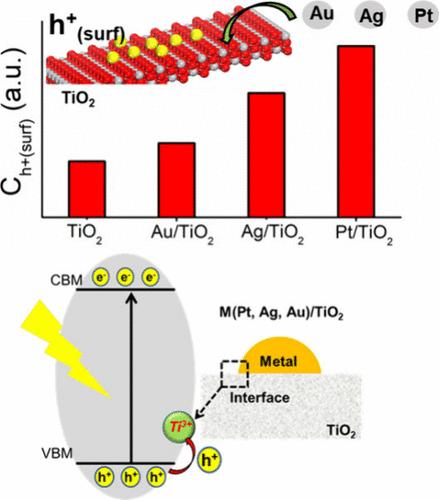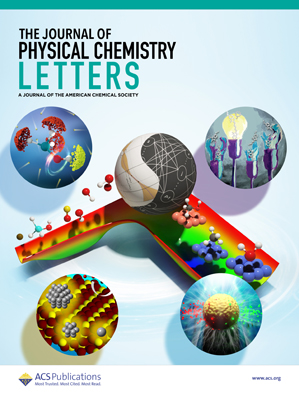Spectroscopic Kinetic Insights into the Critical Role of Metal–Oxide Interfaces in Enhancing the Concentration of Surface-Reaching Photoexcited Charges
IF 4.8
2区 化学
Q2 CHEMISTRY, PHYSICAL
引用次数: 0
Abstract
Surface modification of semiconductors with noble metals has been shown to effectively tune their photocatalytic activity. However, the photoinduced charge transfer processes at the metal/semiconductor interface and their impact on the concentration of surface-reaching photoexcited charges remain subjects of ongoing debate. In this study, we used time-resolved spectroscopy and kinetic analysis to investigate the behavior of surface-reaching photoholes in metal-loaded TiO2 nanoparticles. Our results reveal that the concentration of surface-reaching photoholes (Ch+(surf)) is highly dependent upon the type of metal and the resulting metal–oxide interface. Among the noble metals studied (Pt, Au, and Ag), Pt loading led to the most significant increase in Ch+(surf), with a nearly 3-fold enhancement compared to pristine TiO2. This enhancement was attributed to the generation of more abundant Ti3+ defects at the metal–oxide interface, which serve as hole trap states, thereby accelerating interfacial charge transfer, improving charge separation, and enriching Ch+(surf). These findings underscore the critical role of the metal–oxide interface in enhancing surface-reaching photoexcited charges, offering valuable insights for the design of advanced materials for solar energy conversion.

求助全文
约1分钟内获得全文
求助全文
来源期刊

The Journal of Physical Chemistry Letters
CHEMISTRY, PHYSICAL-NANOSCIENCE & NANOTECHNOLOGY
CiteScore
9.60
自引率
7.00%
发文量
1519
审稿时长
1.6 months
期刊介绍:
The Journal of Physical Chemistry (JPC) Letters is devoted to reporting new and original experimental and theoretical basic research of interest to physical chemists, biophysical chemists, chemical physicists, physicists, material scientists, and engineers. An important criterion for acceptance is that the paper reports a significant scientific advance and/or physical insight such that rapid publication is essential. Two issues of JPC Letters are published each month.
 求助内容:
求助内容: 应助结果提醒方式:
应助结果提醒方式:


